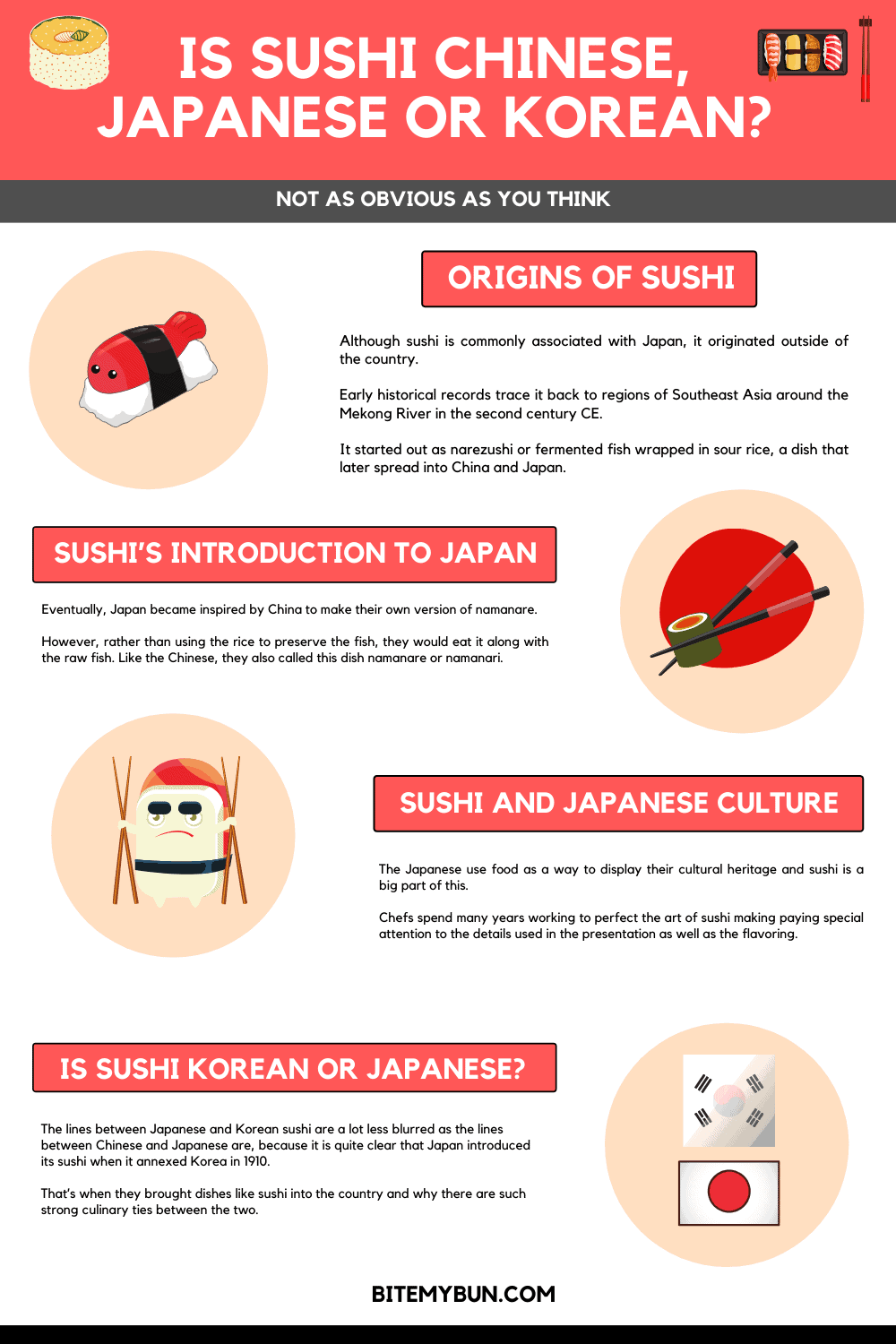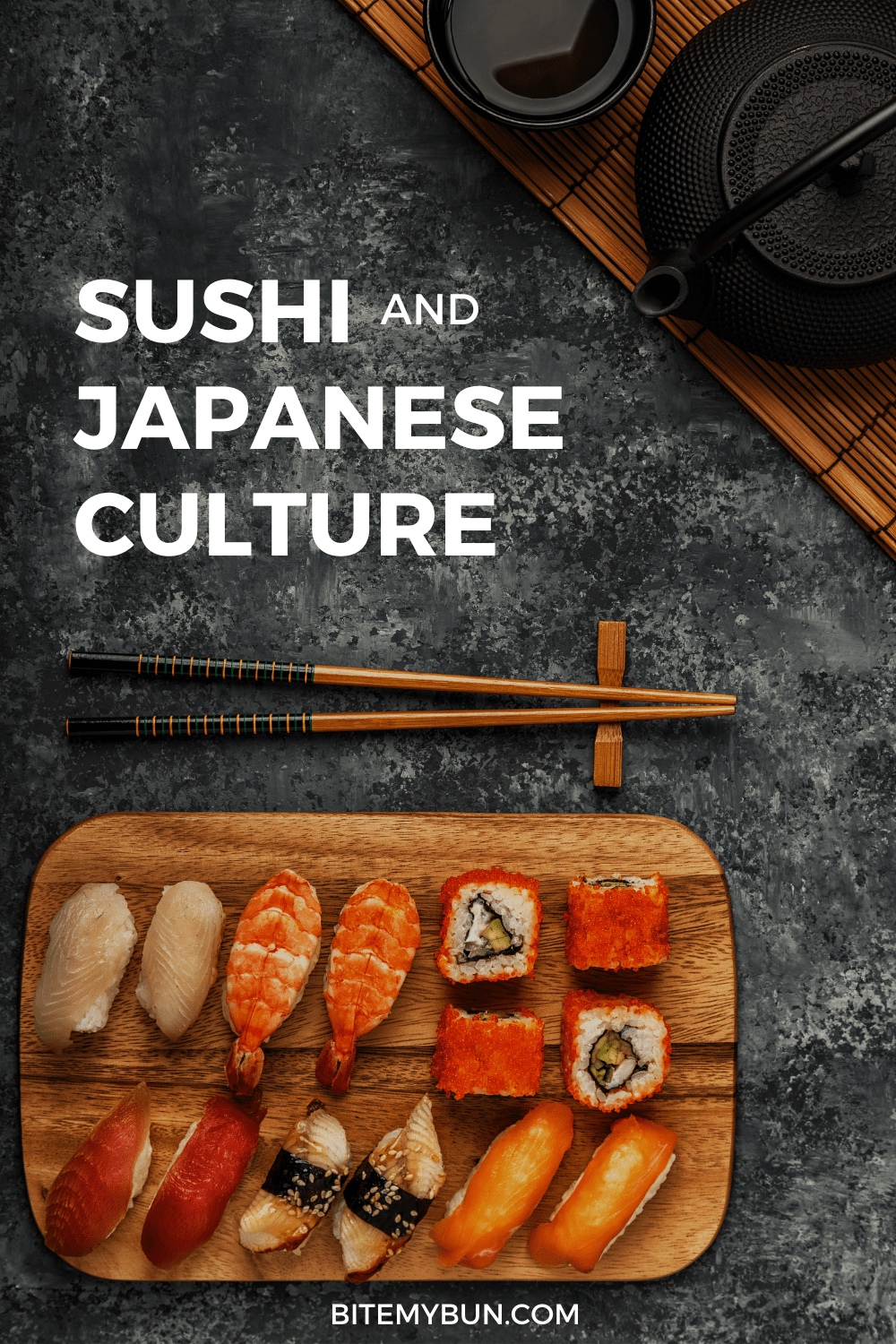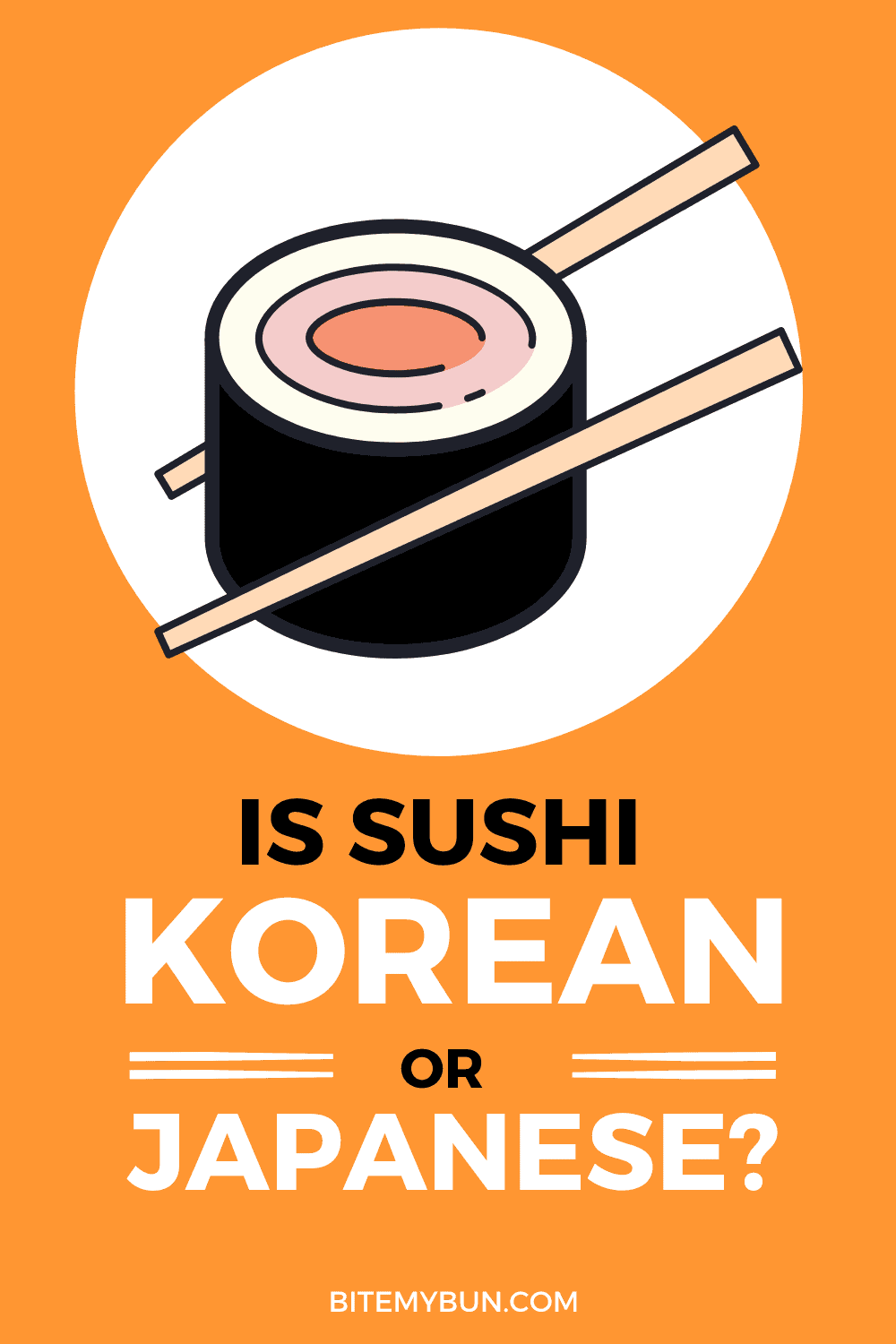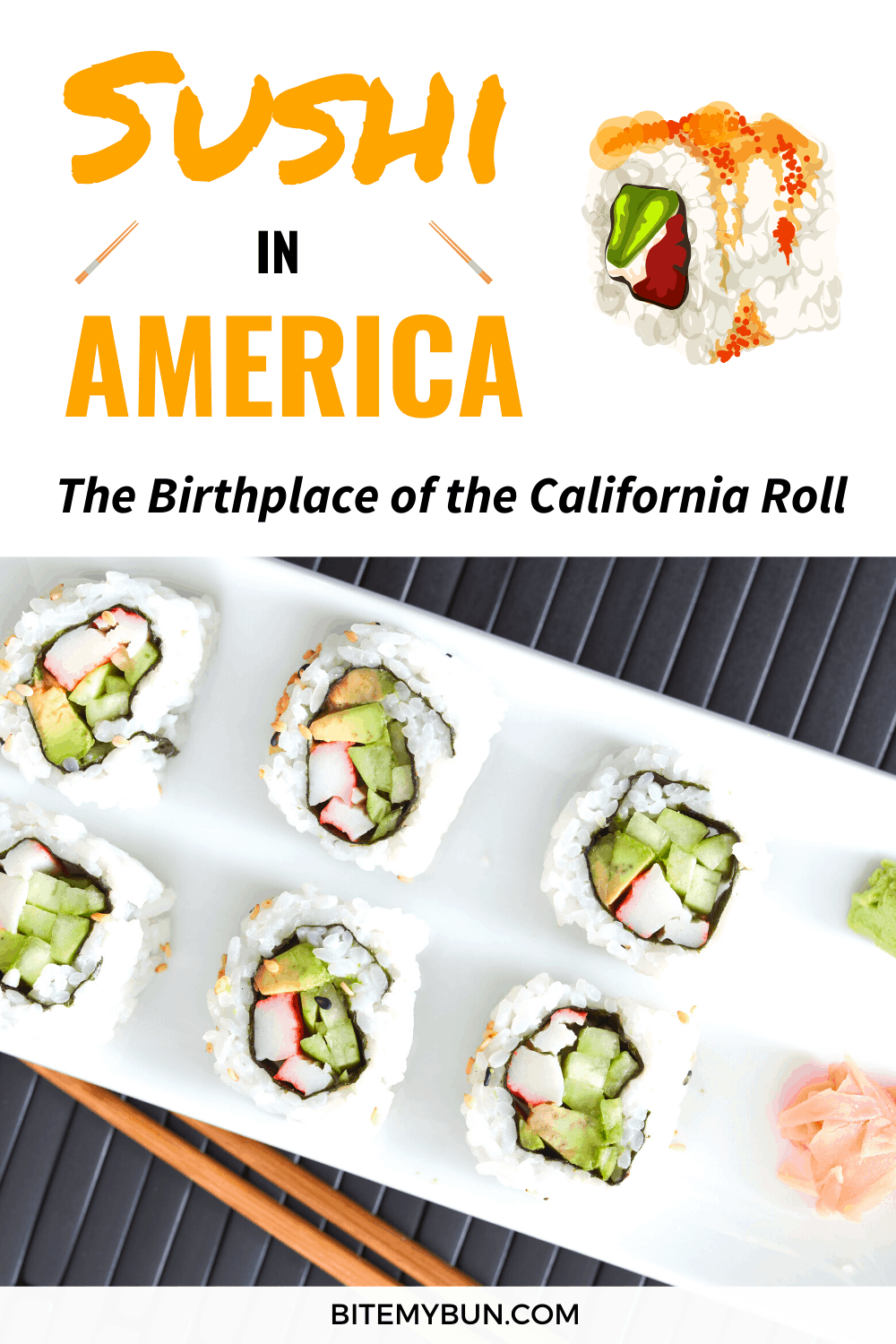Is Sushi Chinese, Japanese, or Korean? The answer’s not so obvious!
I actually thought this question was quite strange, because in my mind, sushi was quite obviously from Japan.
When thinking of the origins of sushi, most will associate it with Japanese culture. They may not even give a thought as to whether it’s Chinese.
However, sushi does have roots in Chinese culture! And it may be surprising to find out how easily these lines can become blurred.
Read on to find out the answer to the question of whether sushi is Chinese or Japanese (or even part of Korean culture!) and why there’s a legitimate cause for confusion.

Check out our new cookbook
Bitemybun's family recipes with complete meal planner and recipe guide.
Try it out for free with Kindle Unlimited:
Read for freeIn this post we'll cover:
Origins of sushi
Although sushi is commonly associated with Japan, it originated outside of the country.
Early records trace it back to regions of Southeast Asia around the Mekong River in the second century CE.
It started out as narezushi, or fermented fish wrapped in sour rice, a dish that later spread into China and Japan.

Also read: sushi for beginners, a complete guide
Although early forms of sushi spread to China and Japan, the Chinese were quick to adopt it.
The rice wasn’t seen as a part of the meal, but rather, as a way to preserve the fish during times before refrigeration.
The fermentation of the rice worked as an antimicrobial, which kept the fish from spoiling.
When rice ferments, it becomes acidic, producing conditions that are unfavorable to bacteria.
The half-fermented fish that resulted from this preservation process is known as namanare.
Today, there are still dishes served in Hunan that use rice and salt to ferment fish.
Sushi’s introduction to Japan
Eventually, Japan became inspired by China to make their own version of namanare.
However, rather than using rice to preserve the fish, they’d eat it along with the raw fish. Like the Chinese, they also called this dish “namanare” or “namanari”.
The dish continued to evolve and during the Muromachi period, it was served as raw fish wrapped in vinegar rice. It was made to be eaten fresh to preserve the flavor.
Once again, rice wasn’t used to preserve the fish, but just for the taste and enjoyment of the food.
However, it’s worth mentioning here that the formulation of vinegar played a major role in the evolution of sushi. Once vinegar was ccreated, people stopped using fermented rice to preserve their fish by using vinegar instead.
Not only did vinegar work well in the preservation process, but it also brought a taste to the fish that people preferred, especially when it was mixed with sugar.
It wasn’t until the mid-1800s during the Edo period, that we’d start to see sushi that more closely resembled the modern-day sushi we know and love.
The modernized version was called “hayazushi,” and it was created by a man named Hanaya Yohei.
Yohei updated the production and presentation of the raw fish and vinegar rice recipe, making it much closer in taste and appearance to the sushi we eat today.
Yohei started by setting up a food stall near the coastal area of Japan where he could get fresh fish.
Instead of wrapping the fish in rice, he gave the rice an oblong shape and placed raw fish on top of it. He served it as a snack that soon became a hit among the locals.
To make the morsels even more attractive, he served them with wasabi and soy sauce. This helped make them a much sought-after treat.
The fast and easy preparation was also part of what made them popular.
In addition, this new form of sushi helped spur a tuna craze in Japan.
Once thought of as a common fish, tuna was often used in different sushi recipes. As a result, it’s enjoyed more now than ever.
Sushi and Japanese culture

Although there are blurred lines when considering whether sushi is Chinese or Japanese, many associate the food with Japan.
This is partially due to the fact that a Japanese man is credited for bringing the modern version of sushi to the masses. But it’s also because Japan has integrated the food so firmly into its culture.
The Japanese use food as a way to display their cultural heritage, and sushi is a big part of this.
Chefs spend many years working to perfect the art of sushi making, paying special attention to the details used in the presentation, as well as the flavoring.
This is part of why many tourists put “visiting a traditional sushi restaurant” on their bucket lists.
If you visit one of these restaurants, you’ll find modest nigirizushi and sushi rolls that differ greatly from the Westernized sushi we’re used to seeing.
Another reason sushi has become so popular in Japanese culture is that the country is surrounded by the ocean on all of its borders. This makes fish a huge part of its staple diet.
Is sushi Korean or Japanese?

The lines between Japanese and Korean sushi are a lot less blurred than the lines between Chinese and Japanese are because it’s quite clear that Japan introduced its sushi when it annexed Korea in 1910. That’s when they brought dishes like sushi into the country and why there are such strong culinary ties between the two.
The Korean sushi you see now is an evolution from the sushi that Japan brought and they call it “gimbap”, which are more like sushi bowls (Japan also has sushi bowls but they are quite different. Read all about these types of sushi here).
Sushi in America

Sushi isn’t only popular in Japan; it’s popular all over the world!
It first came to America in the 1960s when the Kawafuku Restaurant opened in the Little Tokyo section of Los Angeles. After that, many other sushi restaurants followed suit.
Sushi caught on big in America and was a favorite among everyone from A-list celebrities to immigrants. It continued to evolve with the creation of the California roll, which brought avocado and crabmeat into the mix.
And while California loved sushi, it spread to other states of the US. Particularly, it became a hit in New York and Chicago.
Sushi restaurants rapidly popped up all over the country in the ’80s. And by the ’90s, it had become a national trend and a major part of the exotic food industry.
Sushi in China today
Just like in every part of the world, sushi is enjoyed in China today.
In addition to being eaten in namanare form, it’s also served in its modern-day presentation in countless sushi restaurants. However, these restaurants are often run by Japanese businessmen.
There are still a few that realize that China was truly behind it all and deserve credit for playing a key role in making sushi available to the world as we know it. We thank them for this amazing dish!
Do Chinese restaurants serve sushi?
Restaurants in China don’t serve sushi, although you do have a few Japanese restaurants in China.
There are a lot of Chinese restaurants in America that began serving sushi because of the popularity of the dish, but it isn’t traditional.
Sushi is a worldwide treasure
Now you know that sushi is indeed Chinese in origin! However, the Japanese have truly claimed it as their own since it’s such a huge part of their culture.
In any case, sushi’s made its way all over the world and today, various cultures enjoy this tasty dish. It’s certainly an international treasure!
Also check out this article on how to make a delicious sushi sauce yourself
Check out our new cookbook
Bitemybun's family recipes with complete meal planner and recipe guide.
Try it out for free with Kindle Unlimited:
Read for freeJoost Nusselder, the founder of Bite My Bun is a content marketer, dad and loves trying out new food with Japanese food at the heart of his passion, and together with his team he's been creating in-depth blog articles since 2016 to help loyal readers with recipes and cooking tips.
